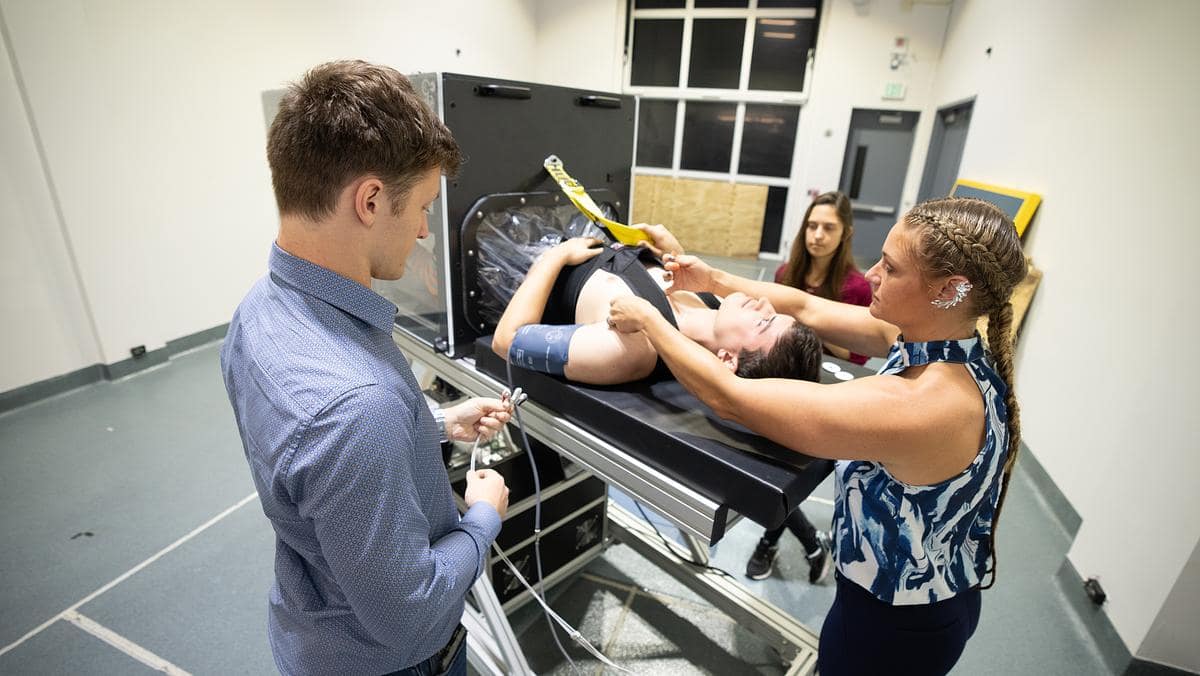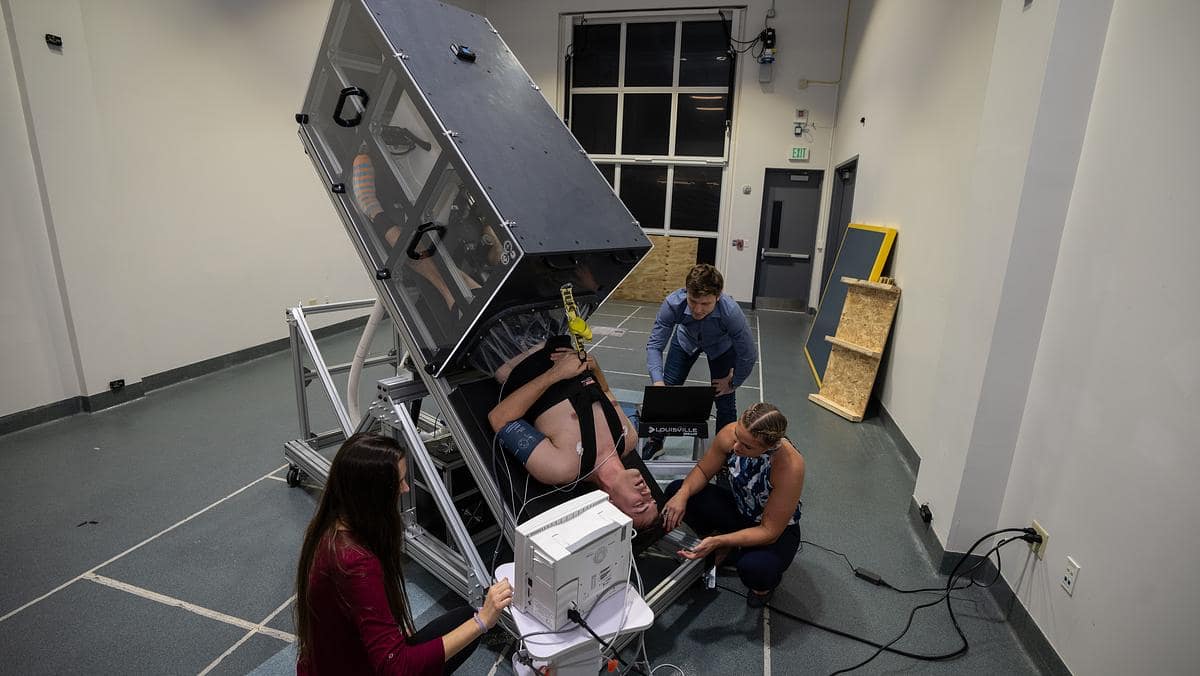Embry-Riddle Researchers Work to Improve Astronauts’ Ocular Health

Astronauts commonly suffer eye damage after spaceflight, with 70% of them affected by a condition called neuro-ocular syndrome (SANS), which is caused by exposure to microgravity environments and can lead to changes in the shape and functionality of eye tissue.
In order to better understand the correlation between microgravity and intraocular pressure, Dr. Christine Walck, assistant professor of Mechanical Engineering and director of Embry-Riddle Aeronautical University’s Biomechanical Analysis Lab (ERBAL), located in the MicaPlex at the Daytona Beach Campus, has begun preliminary research using microgravity simulation systems.
“When you go to space and gravity is removed, fluid in your body starts to shift upwards,” said Walck. “Such a shift causes a higher pressure to form behind your eyes than you are used to.”
This increased intraocular pressure can alter the shape of the retina and other ocular structures, potentially leading to vision changes, she said. While some astronauts have experienced persistent vision changes after returning to Earth, the extent of these effects vary.
Studies have also shown that around 82% of male astronauts are affected with SANS, versus 62% of female astronauts, said Walck, which is something she also wanted to explore.
Simulating Microgravity
James Palmer, a graduate Mechanical Engineering student, is a volunteer in Walck’s research. Strapped onto a tilt table with the lower part of his body in a negative pressure chamber, Palmer’s body is inverted so that his head is facing toward the ground for several minutes, while his vital signs and eye pressure are measured and monitored by student research assistants Megan Parker and Isaac Kay.
Tilt-table tests simulate aspects of microgravity, including creating a redistribution of bodily fluids similar to that experienced by astronauts, said Walck.
“With the lower-body negative chamber attached, we can study countermeasures since the negative pressure acts like a vacuum pulling the fluids back down toward the lower extremities, thus simulating Earth’s gravity,” said Walck.
With Institutional Review Board (IRB) approval, Walck has begun collecting data to investigate the impact of postural changes on intraocular pressure, blood pressure and heart rate to determine the relationship between ocular and vascular blood flow and function in altered-gravity conditions. Additionally, her study is examining if lower body negative pressure can reduce intraocular pressure elevations during head-down tilt.
Walck herself was the first test subject, while Kay and Parker measured her intraocular pressure and blood pressure in two different head-down tilt postures, with and without the application of lower body negative pressure. With this initial data, evidence was found of an association between cardiovascular and ocular responses to gravitational changes, she said. Results indicate an inverse relationship between blood pressure and heart rate, and a direct relationship between blood pressure and intraocular pressure during all tested postures and lower body negative pressure levels.
The results suggest that blood pressure and heart rate may play a role in regulating intraocular pressure in altered-gravity environments.

Student data analyst Megan Parker (left) monitors the pulse rate of test subject James Palmer, as he is tilted upside down. Dr. Christine Walck, along with student research assistant Isaac Kay, work with the device that simulates microgravity while analyzing intraocular pressure. (Photo: Embry-Riddle/David Massey)
“This research enhances the understanding of cardiovascular and ocular changes induced by altered gravity and indicates that lower body negative pressure has the potential to safeguard visual health during extended space travel,” Walck said.
Still in the early stages of her research, Walck plans to test and collect data on 100 volunteers. Later, a computer model simulation will be developed to compare the data based on gender, analyze any differences and identify possible countermeasures.
“The imminent expansion of manned spaceflights to include multi-year planetary missions and the popularization of civilian space travel has created a growing need to understand how human physiology reacts to microgravity,” said Walck. “A leading health concern is the impact of long-duration spaceflight on visual performance and ocular anatomy.”
Students in Action
Embry-Riddle students said they are gaining valuable hands-on experience while helping Walck collect and analyze the research data.
“Dr. Walck inspired me to get involved in research,” said Kay, who is pursuing his master’s degree in Electrical and Computer Engineering. “I’m now looking to apply to a few Ph.D. programs.”
Parker, who is pursuing her bachelor’s in Mechanical Engineering, agreed, saying she first became interested in the project because she is focusing on the biomedical systems track. She said working on the project has shown her that she likes research and would like to pursue a graduate degree.
“It’s just been an awesome opportunity,” said Parker.

 Melanie Stawicki Azam
Melanie Stawicki Azam